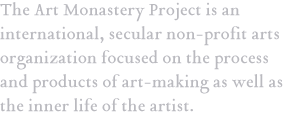Economies of Merit
In many monastic and religious traditions, ethical and spiritual “merit” gets traded like a commodity.[1. For example, the 15th and 16th century papacy’s practice of selling spiritual indulgences: “the Church drew from the the treasury of merits accumulated by the good works of the saints, and in return the recipient made a contribution to the Church. A voluntary and popular arrangement, the practice allowed the Church to raise money for financing crusades and building cathedrals and hospitals. At first applied only to penalties imposed by the Church in this life, by Luther’s time indulgences were being granted to remit penalties imposed by God in the afterlife, including immediate release from purgatory. With indulgences effecting even the remission of sins, the sacrament of penance itself was seemingly compromised.” (Richard Tarnas, in Passion of the Western Mind)]
Nuns and monks agree to live a certain way, abiding by a certain kind of behavior (which their society has deemed the most virtuous or ethical), and in exchange they don’t have to earn their own money to stay alive, but can focus on loftier or more personally pressing matters. What the monastics bring to the bartering table is merit—a substance, not much more abstract than money, that your good deeds earn you and which earns you future spiritual favor (a trip to heaven, a better rebirth, decreased negative karma, etc.). How a monk or nun lives effectively earns them points, which, for their purposes, will be directly or indirectly useful in attaining whatever it is they are seeking. When monastics follow the rules and earn a surplus of merit, which they agree to share with each other, with laypeople (alive and dead), and other beings, they earn their worldly keep.
This merit benefits the surrounding society in a number of ways. Directly, lay folk ask the merit-rich monks, nuns and priests to pray for them and for their (living or dead) relatives, and to perform rites and ceremonies for them. Indirectly, the knowledge that the monks you give alms to exist as exemplars of (your definition of) purity and holiness, encapsulated in special buildings more beautiful than any, is a gift.
On a broader level, monasteries themselves agree to uphold and enforce merit-earning behavior, and are given land, buildings, and special rights. Monasteries are merit-engines.
So which came first in monastic traditions around the world: morality, merit, or money?
Of course, monasteries have arisen and spread in many places for many different reasons. There is no unifying Monasticism in which the world’s many monastic traditions participate, or ideal to which they have been directed. Some of them aim for heaven on earth—a New Jerusalem—and some just aim to be a self-sustaining community where men and women can take responsibility for each other, or an ideal environment for contemplation and awakening.
Yet they all become, as the Friar William says in Umberto Eco’s the Name of the Rose, a speculum mundi—a mirror for the world, reflecting the mores and sins of a society.
A monastery’s primary means of reflecting society was through the accumulation of ethical and (thereby) spiritual merit. Monks and nuns were to be paragons of (their society’s idea of) virtue. They had triumphed over vice, and in exchange were given the gift of existence. Every monastery had to became a speculum mundi, or else risk not surviving at all.
As I’ve suggested before, monasteries are not isolated or separate (as we may have become accustomed to thinking), but rather are completely entrenched in economies, moralities, religions, societies, politics, climates, languages, and art histories.
It could be argued that, as part of their covenant with the societies they grew up in, monastic traditions adopted stricter moral codes than what might have been necessary and sufficient, as a means of survival. First arose a society’s morality, then society offered money and land in exchange for merit based on that morality. In a vicious loop, the society then began to reflect back the morality embodied in the monasteries, and so forth. A society in which sex was disparaged or vilified would be more likely to fund monasteries where celibacy was a primary merit-earner, where it would be strictly enforced. The more celibate monasteries became, the more society demanded this of monasteries. Societies where sex was less vilified, or more easily forgiven, would assign merit based on other virtues (e.g. poverty, stability, sobriety, silence, scholarship). Perhaps we can already see the softening of a system where unmarried celibates are the highest merit-earners.
From this perspective, there is nothing essential to monasticism except 1) to be this mirror of societal awareness and 2) to serve monkish types. Every monasticism mirrors something unique, and serves monkish types uniquely. The monastery is the macrocosmic echo of the individual contemplative’s enhanced awareness.
Musing on the Mūlasarvāstivāda–vinaya in Buddhist Monks and Business Matters: Still More Papers on Monastic Buddhism in India, Gregory Schopen writes:[2. Read the chapter Art, Beauty and the Business of Running a Buddhist Monastery in Early Northwest India from Schopen’s book.]
…[H]ow is it that groups of ascetic, celibate men who were supposed to have renounced all wealth and social ties, left such largesse in the archeological record; how is it that they, and sometimes they alone, lived in North India in permanent, architecturally sophisticated quarters, that they, and they alone, lived in intimate association with what we call art? Something is clearly wrong with this picture, and there is a good chance that we have not yet understood the people of North India who handled the coins we study or the pots we classify… [I]t is perhaps worthwhile to try to understand what exactly a Buddhist monk was in Early North India. We can do this a little better because we know a little better an important Buddhist monastic code that appears to have been redacted here. That the Buddhist monk in Early North India, and in this monastic code, did not look like the caricature found in modern scholarly sources will come as no surprise to those who know well what he left behind in his living quarters. The monk that we will see in this code is a construction foreman, an art promoter, a banker, an entrepreneur, sometimes a shyster, and sometimes a saint—he should at least prove to be of some interest. …
…[W]e find monks who have servants and who do not even have to wash their own dishes; monks who eat fine meals in the homes of prominent laymen; monks who are concerned not about meditation but with property, with marking and maintaining control or possession of property, and who have and acknowledge personal property. Moreover, the monks with whom our Code is concerned live—whether in the forest or in the village—in monasteries that are owned by laymen, and it is becoming ever clearer on the basis of this Code that that meant that the monks were in at least some important ways in the employ of their donors.
Schopen goes on to describe what I’m calling the “Economies of Merit” operating in early North India.
There are rules in the Code that require, for example, that monks—regardless of their own wishes—must spend a part of each day in any vihara that has been “donated,” to ensure that none stands empty, that all are used, and thus to continue to earn merit for their owner, even if a single monk has to move from one to another in the course of the same day. There are rules that require the monks to recite verses every day for the merit of not only the owner of the monastery but also each and every donor or benefactor, and each of their individual names must every day be announced—this in a monastery of any size could easily have taken up a significant part of the day. There was, however, an even more serious problem in this “employment,” a systemic problem of far-reaching consequences that involved our monks—and early on it seems—in money transactions, sophisticated financial enterprises, the promotion of “art,” and extensive fund-raising projects. It created situations that, for example, the administrators of the Nelson-Atkins Museum of Art, or any institution, might find uncomfortably familiar.
In economies of merit, monastics have traditionally earned the privilege to own (in common) land, lavish architecture, and objects (both sacred and useful), as well as to receive food, tithes, autonomy and protection in exchange for upholding their moral vows (poverty, chastity, sobriety) as well as for rites and rituals performed for individuals and the common good. Schopen:
Monks could, then, in effect try to force the owner of a vihara [monastery] to provide for their maintenance by withdrawing or refusing to provide their services, but this of course could be a two-edged sword, and if they tried it, they might find themselves not only out of business but also without a home.
Among four economic actors (Monasteries, monks, rich landowners, and the general lay populace), an exchange occurs at two levels. 1) In exchange for assurance that monks are “accumulating” individual moral and contemplative merit and sharing that merit broadly (in a vague “spiritual” sense), and 2) in exchange for performing rites and ceremonies that share merit with individual lay-people, assuring them of benefit in this world or the next, 3) landowners cover the fixed costs of being a monastery, and 4) the general lay populus covers the variable costs (e.g. food for monks).
Out of the merit economy came the eventual participation of monasteries in traditional economies of goods. Schopen:
…[T]he Buddha then gives a first directive: “When someone makes an offering feast for the sake of the Community, you must sell them rice!” …Clearly, the monks who redacted the Code realized that being in one business, the business of attracting donors, required engaging in other businesses as well, like buying and selling grain.
Whether monastic merit-for-money system is itself really meritorious, or merely meretricious, merit economies have had a real moral and economic impact on the history of societies with religious and monastic traditions.
What happens, though, when potential donors no longer believe their donations will earn them merit and a better position in the afterlife? You end up with something not unlike the modern non-profit organisation, which makes no promise of better seats in heaven or loftier rebirths, yet garners donations merely because of the social and environmental merit—so to speak—they generate. They receive donations from lay-folk, grants and special tax status from governments. Nonprofits have become in many ways our speculum mundi—the reflection of our society’s morality.
And what would be the speculum mundi of the world we want to build? What activities would we have earn merit?
Notes:
Leave a Reply
You must be logged in to post a comment.




